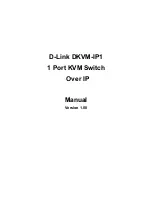
◦ M_Ports and D_Ports must be configured manually.
◦ The D_Port feature provides physical media diagnostic, troubleshooting, and verification services.
• In-flight data compression and encryption on up to four ports provide efficient link utilization and
security.
• VF support improves isolation between VFs.
• FCR service, available with the optional Integrated Routing license, provides improved scalability and
fault isolation.
• ISL Trunking (licensable), which allows up to eight ports (at 4, 8, or 16 Gb/s) between a pair of
switches combined to form a single, logical ISL with a speed of up to 128 Gb/s (256 Gb/s full duplex)
for optimal bandwidth utilization and load balancing. There is no limit to how many trunk groups can be
configured.
• DPS (Dynamic Path Selection), which optimizes fabric-wide performance and load balancing by
automatically routing data to the most efficient available path in the fabric.
• Hewlett Packard Enterprise-branded SFP+ optical transceivers that support any combination of SWL,
LWL, and ELWL optical media among the switch ports.
• Support for unicast data traffic types.
• Fabric OS delivers distributed intelligence throughout the network, and enables a wide range of value-
added applications such as Advanced Web Tools and Zoning. Optional fabric services include
Adaptive Networking with QoS, Extended Fabrics, Enhanced Group Management, Fabric Watch, ISL
Trunking, and End-to-End APM.
• The StoreFabric SN6500B 16Gb FC Switch includes the capabilities associated with the Adaptive
Networking and Server Application Optimization (SAO) features by default; the licenses to enable
these features are not required on this switch.
• Hardware zoning is accomplished at the port level of the switch and by WWN. Hardware zoning
permits or denies delivery of frames to any destination port address.
• Extensive diagnostic and system-monitoring capabilities for enhanced RAS.
• The EZSwitchSetup wizard makes SAN configuration a three-step point-and-click task.
• Real-time power monitoring enables monitoring the real-time power usage of the fabric, at a switch
level.
• Local port latency minimized to 700 ns using cut-through frame routing at 16 Gb/s.
• Allows for switch latency of 2,100 ns (L2 latency without forward error correction).
Platform components
• A system motherboard that features a primary CPU running at 1.20 GHz, with integrated peripherals
• An RJ45 10/100/1000 BaseT Ethernet system management port (RJ45 connector), in conjunction with
EZSwitchSetup, that supports switch IP address discovery and configuration, eliminating the need to
attach a serial cable to configure the switch IP address
• One RS-232 console serial port with an RJ45 connector for initial switch setup, if not using
EZSwitchSetup, and factory default restoration
• One 2 GB DDR2 running at 400 MHz
• Boot memory of 8 MB
• One 2 GB compact flash card
• Up to 96 16 Gb/s FC ports
• One USB 2.0 port that provides storage for firmware updates, output of the
supportSave
command,
and storage for configuration uploads and downloads
• Two hot-swappable, 80+ Platinum-certified, redundant power supplies
• Three hot-swappable fan FRUs
• One LED (green/amber) per FC port to indicate status
• One LED (green) for system power
• One LED (green/amber) for system status
• Two LEDs per power supply: one green LED for AC line-in status, and one green/amber LED for DC
power-out
Platform components
7








































